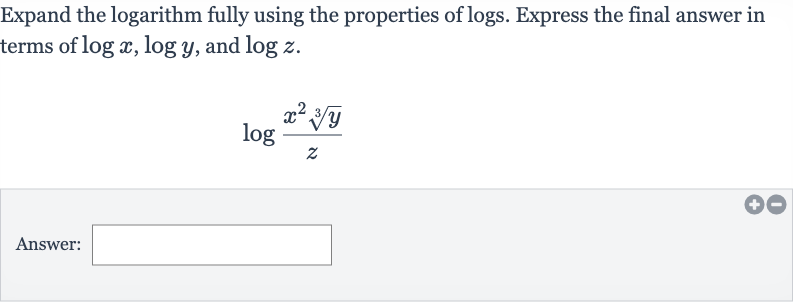Full solution
Q. Expand the logarithm fully using the properties of logs. Express the final answer in terms of , and .Answer:
- Identify Properties: Identify the properties of logarithms that will be used to expand the given logarithm.The properties of logarithms that we will use are the quotient property, the power property, and the property for the logarithm of a root.
- Apply Quotient Property: Apply the quotient property to the given logarithm.The quotient property states that . Therefore, we can write as .
- Apply Power Property: Apply the power property to the term . The power property states that . We can apply this to the term to get .
- Apply Root Property: Apply the property for the logarithm of a root to the term . The property for the logarithm of a root states that . We can apply this to the term to get .
- Combine Results: Combine the results from the previous steps to get the final expanded form.We have as the expanded form of the given logarithm.
More problems from Quotient property of logarithms
QuestionGet tutor help
QuestionGet tutor help
QuestionGet tutor help
QuestionGet tutor help
QuestionGet tutor help

